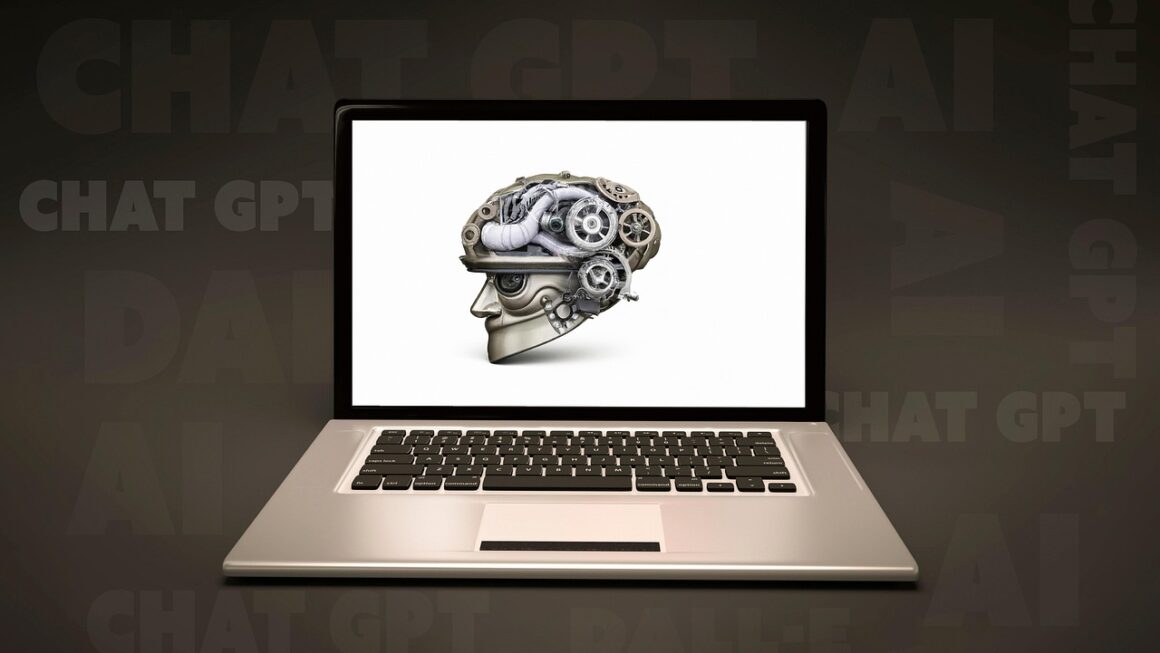Artificial intelligence models are rapidly transforming industries and reshaping how we interact with technology. From generating text and images to predicting trends and automating tasks, AI’s potential seems limitless. Understanding these models is crucial for anyone looking to leverage the power of AI in their professional or personal life. This comprehensive guide delves into the world of AI models, exploring their types, applications, and the future they promise.
What are AI Models?
The Core Concept
At their core, AI models are algorithms trained on vast datasets to recognize patterns, make predictions, or generate content. These models learn from the data they are fed, constantly refining their ability to perform specific tasks without explicit programming. Think of it as teaching a computer to identify cats by showing it thousands of pictures of cats, as opposed to writing a specific rule for every possible cat image. The more data an AI model processes, the more accurate and reliable it typically becomes.
- Learning from Data: AI models learn from patterns in data, enabling them to make informed decisions or predictions.
- Algorithm-Driven: These models rely on sophisticated algorithms designed to perform specific tasks.
- Continuous Improvement: Through ongoing training and feedback, AI models refine their performance and accuracy over time.
Key Components of an AI Model
Understanding the key components helps demystify the complexity of AI models:
- Data: The foundation of any AI model. The quality and quantity of data directly impact the model’s performance.
- Algorithm: The set of rules and calculations the model uses to process data and make predictions. Examples include linear regression, decision trees, and neural networks.
- Training: The process of feeding data to the model to learn patterns and relationships.
- Inference: The process of using the trained model to make predictions or generate content on new, unseen data.
- Evaluation: Assessing the model’s performance using metrics like accuracy, precision, and recall.
Types of AI Models
Supervised Learning
Supervised learning is like learning with a teacher. The model is trained on a labeled dataset, meaning each input has a corresponding correct output. The model learns to map inputs to outputs based on this labeled data.
- Examples:
Image classification: Identifying objects in images (e.g., cat vs. dog).
Spam detection: Classifying emails as spam or not spam.
Predictive maintenance: Predicting equipment failure based on sensor data.
- Algorithms: Linear Regression, Logistic Regression, Support Vector Machines (SVM), Decision Trees, Random Forests.
- Practical Tip: Ensure your training data is balanced (equal representation of each class) to avoid bias in your model.
Unsupervised Learning
Unsupervised learning is like exploring data without any guidance. The model is trained on an unlabeled dataset and aims to discover hidden patterns or structures within the data.
- Examples:
Customer segmentation: Grouping customers based on purchasing behavior.
Anomaly detection: Identifying unusual patterns in data (e.g., fraudulent transactions).
Dimensionality reduction: Reducing the number of variables in a dataset while preserving important information.
- Algorithms: K-Means Clustering, Hierarchical Clustering, Principal Component Analysis (PCA).
- Practical Tip: Before applying unsupervised learning, consider preprocessing your data to handle missing values and scale features appropriately.
Reinforcement Learning
Reinforcement learning is like training a dog with rewards and punishments. The model learns to make decisions in an environment to maximize a reward signal.
- Examples:
Game playing: Training AI to play games like chess or Go.
Robotics: Training robots to perform tasks in the real world.
Resource management: Optimizing resource allocation in complex systems.
- Algorithms: Q-Learning, Deep Q-Networks (DQN), Policy Gradients.
- Practical Tip: Start with a simple environment and gradually increase the complexity as the model learns.
Generative Models
Generative models learn the underlying distribution of a dataset and can then generate new data points that resemble the original data.
- Examples:
Image generation: Creating realistic images of objects, people, or scenes.
Text generation: Generating human-like text, such as articles, poems, or code.
Music generation: Creating new musical pieces.
- Algorithms: Variational Autoencoders (VAEs), Generative Adversarial Networks (GANs), Transformers.
- Practical Tip: Use a diverse and high-quality dataset to train generative models for better results.
Applications of AI Models Across Industries
AI models are being applied in a wide range of industries, driving innovation and efficiency.
Healthcare
- Diagnosis: AI models can analyze medical images (X-rays, MRIs) to detect diseases with high accuracy.
- Drug Discovery: Accelerating the drug discovery process by identifying potential drug candidates.
- Personalized Medicine: Tailoring treatment plans based on individual patient data.
- Example: An AI model trained on thousands of retinal scans can identify diabetic retinopathy with greater accuracy and speed than a human expert.
Finance
- Fraud Detection: Identifying fraudulent transactions in real-time.
- Algorithmic Trading: Automating trading strategies to maximize profits.
- Risk Management: Assessing and managing financial risks.
- Example: Banks use AI models to analyze transaction patterns and flag suspicious activities that might indicate money laundering.
Retail
- Personalized Recommendations: Recommending products to customers based on their browsing history and purchase behavior.
- Inventory Management: Optimizing inventory levels to reduce costs and avoid stockouts.
- Chatbots: Providing customer support and answering questions.
- Example: E-commerce platforms use collaborative filtering algorithms to suggest products that customers might be interested in, based on the purchases of similar customers.
Manufacturing
- Predictive Maintenance: Predicting equipment failures to prevent downtime.
- Quality Control: Identifying defects in products during the manufacturing process.
- Process Optimization: Optimizing manufacturing processes to improve efficiency and reduce costs.
- Example: Manufacturers use sensor data and machine learning models to predict when a machine is likely to fail, allowing them to schedule maintenance proactively.
Transportation
- Autonomous Vehicles: Developing self-driving cars and trucks.
- Route Optimization: Optimizing delivery routes to minimize travel time and fuel consumption.
- Traffic Management: Improving traffic flow and reducing congestion.
- Example: Self-driving car companies use deep learning models to process sensor data and navigate roads safely.
Building and Deploying AI Models
Data Preparation
- Data Collection: Gathering data from various sources.
- Data Cleaning: Handling missing values, outliers, and inconsistencies.
- Data Transformation: Converting data into a suitable format for the model.
- Data Splitting: Dividing the data into training, validation, and test sets.
Model Selection and Training
- Choosing the Right Algorithm: Selecting an algorithm that is appropriate for the task and the type of data.
- Hyperparameter Tuning: Optimizing the model’s hyperparameters to achieve the best performance.
- Training the Model: Feeding the prepared data to the model and allowing it to learn.
- Example: Use cross-validation techniques to evaluate the model’s performance on different subsets of the training data.
Model Evaluation
- Choosing Evaluation Metrics: Selecting metrics that are relevant to the task and the business goals.
- Evaluating Performance: Assessing the model’s performance on the validation and test sets.
- Addressing Bias and Fairness: Ensuring that the model is fair and does not discriminate against certain groups.
- Example: Use confusion matrices to analyze the model’s performance in detail, identifying areas where it performs well and areas where it needs improvement.
Model Deployment and Monitoring
- Deploying the Model: Integrating the model into a production environment.
- Monitoring Performance: Tracking the model’s performance over time and identifying any issues.
- Retraining the Model: Retraining the model with new data to maintain its accuracy.
- Example: Use A/B testing to compare the performance of the AI model with the existing system, ensuring that the AI model is actually providing value.
Ethical Considerations and Challenges
Bias in AI Models
- Data Bias: AI models can inherit biases from the data they are trained on.
- Algorithmic Bias: Bias can also arise from the design of the algorithm itself.
- Mitigation Strategies: Employ techniques such as data augmentation, fairness-aware algorithms, and bias audits to mitigate bias.
Explainability and Transparency
- Black Box Models: Some AI models, such as deep neural networks, are difficult to interpret.
- Explainable AI (XAI): Developing techniques to make AI models more transparent and understandable.
- Importance: Ensuring accountability and building trust in AI systems.
Data Privacy and Security
- Protecting Sensitive Data: Implementing measures to protect the privacy and security of data used to train and deploy AI models.
- Compliance with Regulations: Adhering to data privacy regulations such as GDPR and CCPA.
- Techniques: Employ techniques such as anonymization, differential privacy, and federated learning to protect data privacy.
Job Displacement
- Automation of Tasks: AI models can automate tasks that were previously performed by humans.
- Upskilling and Reskilling: Investing in training programs to help workers adapt to new roles.
- Creating New Opportunities: Focusing on creating new jobs and opportunities in the AI economy.
Conclusion
AI models are powerful tools that can transform industries and improve our lives. By understanding the different types of models, their applications, and the challenges they present, we can harness their potential responsibly and effectively. From healthcare to finance, retail to manufacturing, AI is already making a significant impact, and its influence will only continue to grow in the years to come. By addressing the ethical considerations and focusing on building transparent, fair, and secure AI systems, we can ensure that these technologies benefit everyone.




